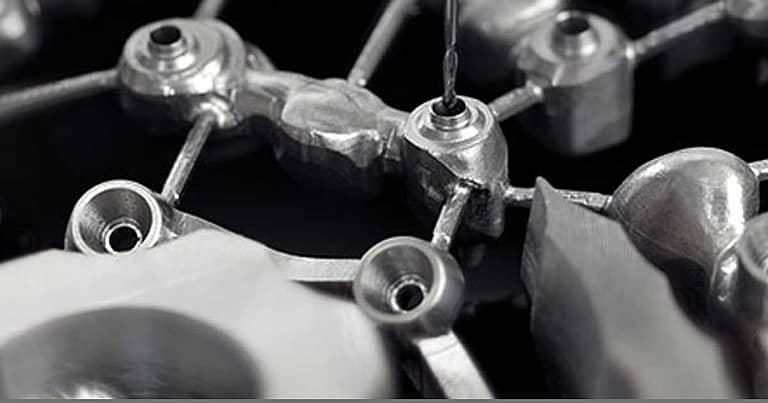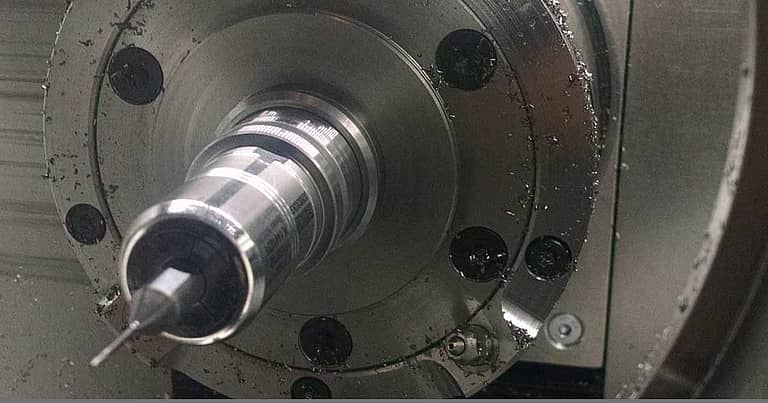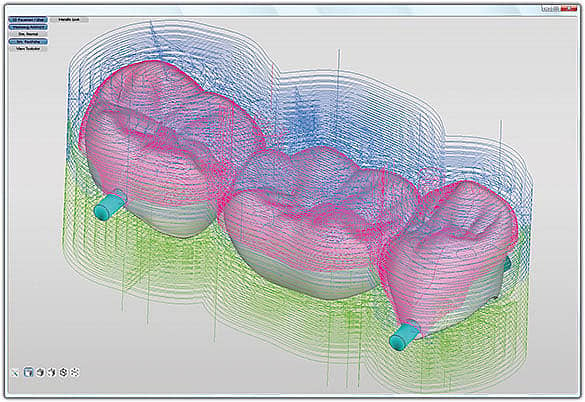
In-Source Metal Milling For Your Dental Lab
Technology that allows small to moderate sized labs to mill their own PFMs understructures, custom abutments and implant bars has matured significantly in the past few years. Not long ago, an average lab had to choose to either paying top dollar to have a large company mill these types of units, or go through the labor intensive process of casting. Today, a wide variety of milling equipment has become available which has unlocked the ability for CAD/CAM savvy labs to be more self-sufficient and profitable; however, there is still some uncertainty when it comes to when this is an appropriate and prudent step to take. In this post, we’ll focus on three key-indicators that your lab is ready to take its milling game to the next level.
1. You’re Already Scanning, Designing and Milling Soft Materials
If your lab already has built up the workflow and knowledge base to successfully operate CAD/CAM equipment for the purposes of milling zirconia, wax or PMMA – then you’re already half way there! In general, I advise against going right from having zero milling in your lab to bringing in metal milling – it’s a little akin to biting off more than you can chew. However, the process and workflow of a successful zirconia milling laboratory is very similar to that of a titanium or chrome-cobalt milling laboratory.
If your dental lab already has CAD/CAM knowledge taking on metal milling will have a shorter learning curve.
It is important to note that you might not necessarily be integrating metal milling equipment with your existing CAD/CAM infrastructure. Depending on the focus of your lab and your client base, new or upgraded scanning systems and/or CAM software may be necessary to achieve desired results (for example: implant bar manufacture places different demands on the CAD/CAM system compared to crown and bridge work). The thing to keep in mind is that if your team already has a good foundation of knowledge in CAD/CAM, the learning curve for new technology will be much more manageable.
2. Your Clients are Asking for Added Value from your Lab
Ever turn work away? Or worse yet, take a case on just to realize that it’s costing you money because you have to depend heavily on outsourced work to complete it? If your clients have been asking your lab to provide additional services and they’ve been doing it for a while – you have a market in your area that is hungry for a more capable and comprehensive laboratory to meet their needs. There are many ways to quantify this potential, which is a very necessary step on the path to making a business decision. Many labs will survey their client base, either via email, snail mail survey, or with a phone outreach program. If your clients aren’t getting their milled PFM crowns and bridges or titanium bars and abutments from your lab – where are they getting them? And most importantly, would they consider using your lab for a source of these units if you were to offer this service? This approach gives you a good idea of what the initial revenue impact will be if and when you begin to market additional capabilities.
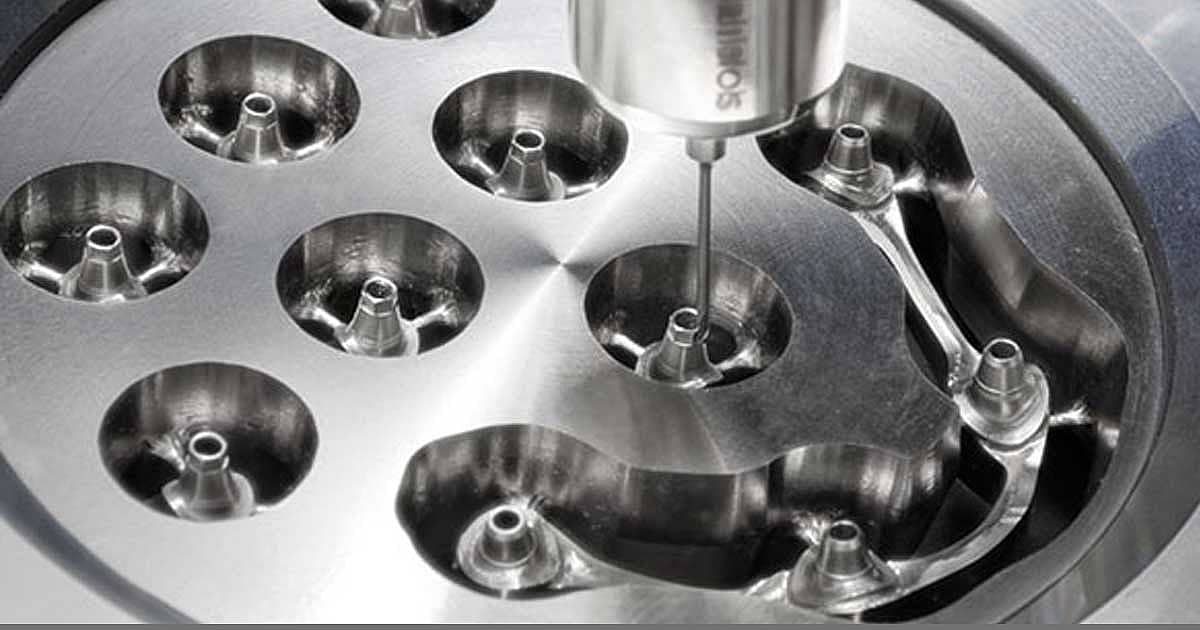
3. Your Monthly Cost for Outsourced Milled Units is Regularly Greater Than $6,000
A few chrome-cobalt copings here, couple of abutments there, that bar case last week, plus the full arch that you weren’t quite sure your light duty table top mill could do a good job with…. It adds up quickly doesn’t it? Sure does. If you already have CAD/CAM technology in your lab and you’re confident that your client base would send more business your way if you had the capability in house, then it’s time to brush the dust off the last 18 months of your lab’s financial records. Why? Because the first two criteria alone are not sufficient to justify an equipment purchase. In order to move forward in full confidence that you’re making the right decision for your business you need to analyze your lab’s outsourced consumption for at least the past year and a half, preferably longer. This will give you both reliable information on both how much your lab outsources in an average month, but also data on growth trends which will allow you to forecast your labs needs in the future. The more data you have, the more clarity and confidence you will have in your decision.
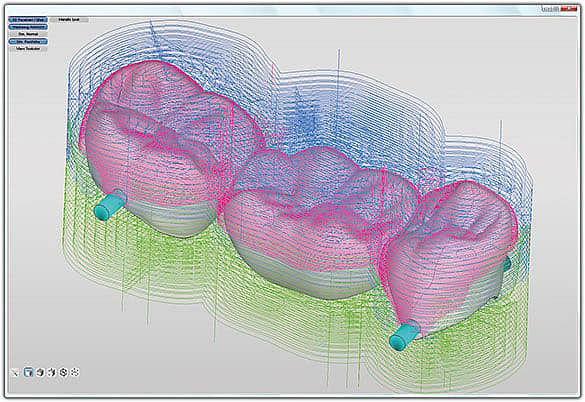
Why are we looking at outsourced cost per month? Viewing the situation in this manner allows us to break the big question; “Will this equipment investment yield a good return?” into an easier question to answer; “Will this equipment make my business money on a monthly basis and if so, how much?”.
With the significant investment that is required to bring qualified metal milling equipment and tools into your lab (generally from $100,000 to $300,000 or more) it is quite common for business (dental labs or otherwise) to lease the equipment instead of going with an outright purchase. In addition to making a “monthly ROI” easy to calculate, many financial advisors will tell you that leasing is the preferred method for purchasing capital equipment as it allows your business to maintain financial liquidity. Typical lease packages for manufacturing equipment will have a $1 buyout at the end of the lease period – so your manufacturing can continue uninterrupted at the end of the lease. At common rates, the monthly payment for a five year lease on a quality piece of milling equipment that is robust enough to handle regular milling in titanium or chrome-cobalt will range anywhere from $2,000 to $4,000 per month. With this in mind, a lab that consistently outsources $6,000 per month will see a return on investment in just over 2 years.
Many labs put off the decision on whether or not to adopt titanium or chrome-cobalt milling capabilities out of a fear that it’s too complicated or too costly, and for some labs it is. But when emotions are removed from the equation and the situation is reviewed logically, lab owners are often surprised at how easy and beneficial of a decision it can be.




